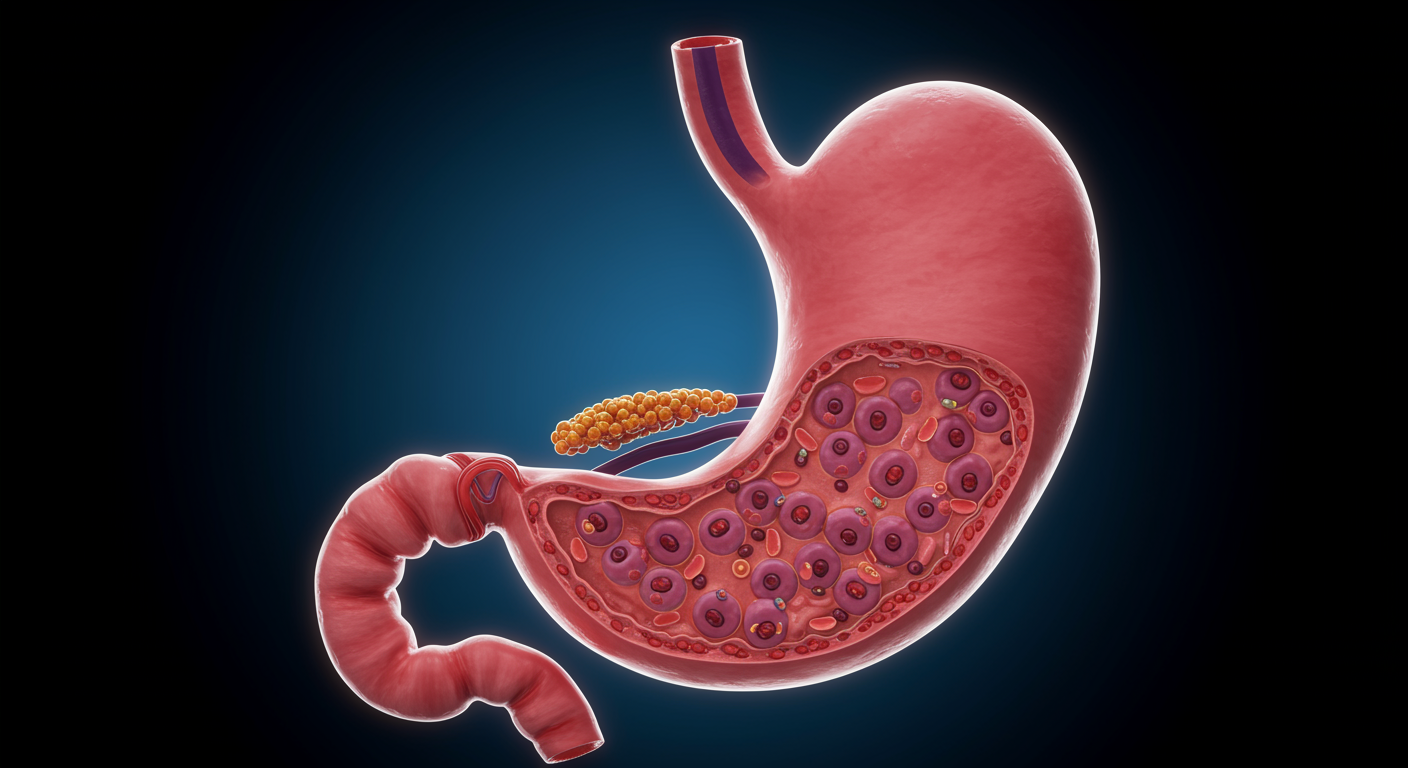How Does Your Stomach Actually Work?
The stomach is a complex muscular organ that serves multiple critical functions including acid production for digestion and antimicrobial defense, protein synthesis for vitamin absorption, mechanical breakdown of food into chyme, and coordination of digestive processes through neural and hormonal signaling. Contrary to popular belief, the stomach does not absorb nutrients but rather prepares food for absorption in the small intestine through chemical and mechanical processing.
Dr. Kumar’s Take
Understanding stomach physiology is fundamental to comprehending digestive health and disease. The stomach is far more sophisticated than just an acid-producing sac - it’s a highly coordinated organ that integrates neural, hormonal, and mechanical functions to optimize digestion. The intricate balance of acid production, protective mechanisms, and motility patterns explains why disruptions in any of these systems can lead to conditions like GERD, ulcers, or gastroparesis. This knowledge is essential for understanding how treatments work and why maintaining stomach health is so important.
What the Research Shows
This comprehensive physiological review examines the structure, function, and regulation of the stomach, covering anatomical organization, cellular mechanisms of acid production, protective factors, motility patterns, and integration with the broader digestive system. The analysis includes both normal physiological processes and their clinical implications.
The research demonstrates that stomach function involves complex interactions between multiple cell types, neural pathways, and hormonal systems that work together to optimize digestion while protecting the organ from self-damage.
How This Works (Biological Rationale)
The stomach contains specialized cell types including parietal cells (acid production), chief cells (pepsinogen secretion), mucus cells (protective barrier), and G cells (gastrin production). These cells are organized in gastric glands within the fundus and body regions, with different regions having distinct functions.
Gastric acid production involves the H,K-ATPase proton pump in parietal cells, regulated by neural (vagal), hormonal (gastrin), and paracrine (histamine) pathways. Protective mechanisms include mucus-bicarbonate barriers, prostaglandin production, and rapid epithelial renewal to prevent acid-induced damage.
Why This Matters for Health and Performance
Understanding stomach physiology is crucial for recognizing how various conditions and treatments affect digestive function. Knowledge of acid production mechanisms explains how PPIs work and why they have specific effects. Understanding protective mechanisms helps explain ulcer formation and healing.
Gastric motility patterns affect food processing and emptying, influencing symptoms like bloating, nausea, and reflux. The stomach’s role in vitamin B12 absorption through intrinsic factor production has important nutritional implications.
Safety, Limits, and Caveats
The physiological review focuses on normal function and may not fully address all pathological states or individual variations in gastric physiology. Age, genetics, medications, and disease states can significantly alter stomach function in ways that may not be fully captured in standard physiological descriptions.
The research also doesn’t extensively cover all clinical implications or therapeutic interventions that might affect gastric physiology.
Practical Takeaways
- Appreciate that the stomach has multiple integrated functions beyond acid production
- Understand that gastric physiology involves complex neural, hormonal, and cellular interactions
- Recognize that disruptions in any aspect of gastric function can have wide-ranging effects
- Use knowledge of normal physiology to understand disease mechanisms and treatment approaches
- Consider that medications affecting gastric function can have multiple downstream effects
- Realize that maintaining gastric health involves supporting all aspects of stomach physiology
Related Studies and Research
- Acid Secretion and the H,K-ATPase of Stomach
- Physiology, Gastric Intrinsic Factor
- Role of Gastric Acid in Food Iron Absorption
- Pharmacology of Proton Pump Inhibitors
- Episode 25: The Great GERD Mistake - How Medicine Made Heartburn Worse and How to Fix It
FAQs
What are the main functions of the stomach?
The stomach produces acid for digestion and antimicrobial defense, synthesizes intrinsic factor for B12 absorption, mechanically breaks down food, and coordinates digestive processes.
Does the stomach absorb any nutrients?
No, the stomach primarily prepares food for absorption but doesn’t absorb nutrients itself - absorption occurs mainly in the small intestine.
How is stomach acid production regulated?
Acid production is controlled by three main pathways: neural (vagus nerve), hormonal (gastrin), and paracrine (histamine) signaling that converge on parietal cells.
What protects the stomach from its own acid?
Multiple protective mechanisms include mucus-bicarbonate barriers, prostaglandin production, rapid cell renewal, and tight junctions between epithelial cells.
How does stomach function change with age?
Aging can reduce acid production, decrease protective mechanisms, slow gastric emptying, and alter neural regulation of gastric function.
Bottom Line
The stomach is a sophisticated organ with multiple integrated functions including acid production, protein synthesis, mechanical processing, and digestive coordination. Understanding normal gastric physiology is essential for comprehending digestive health, disease mechanisms, and therapeutic approaches.


